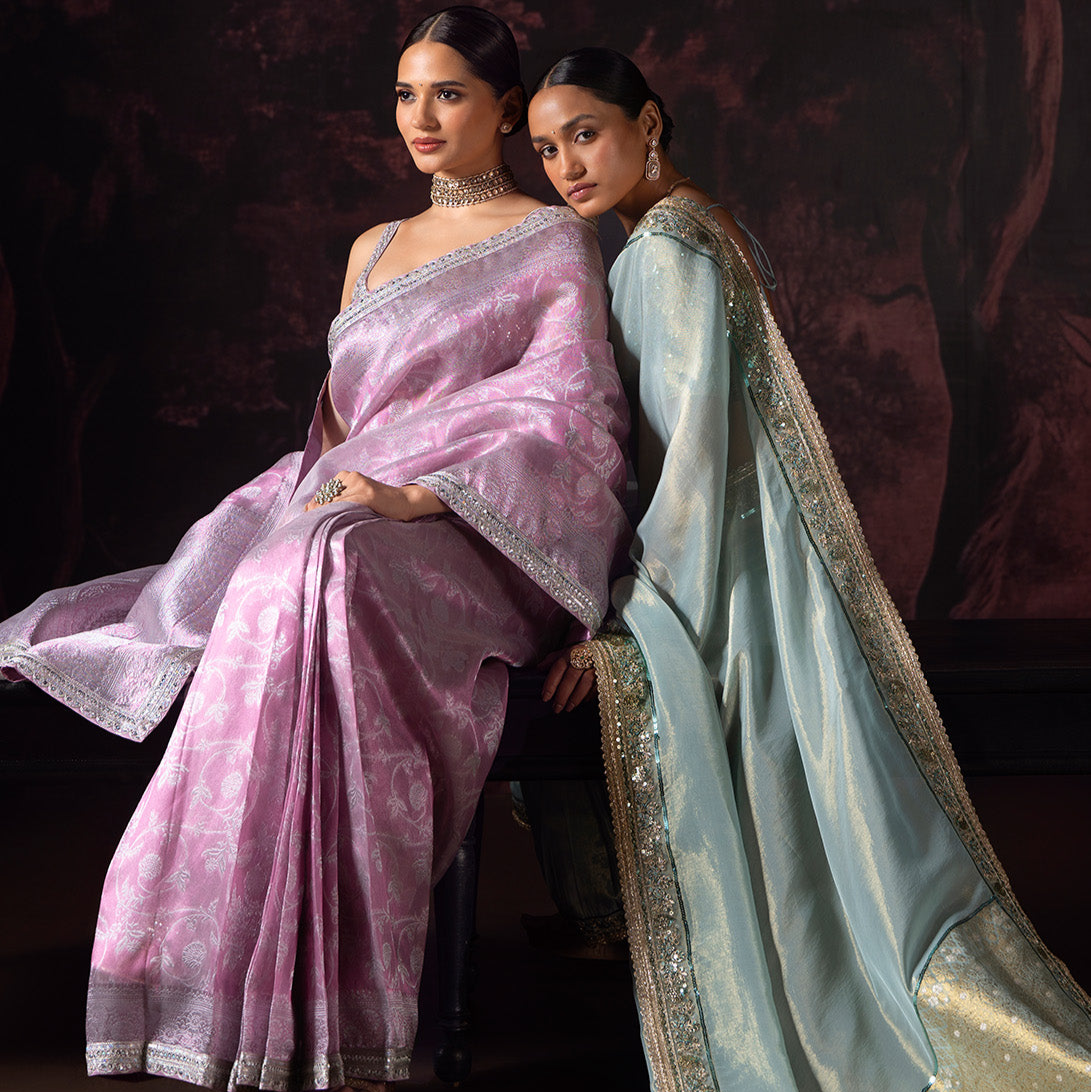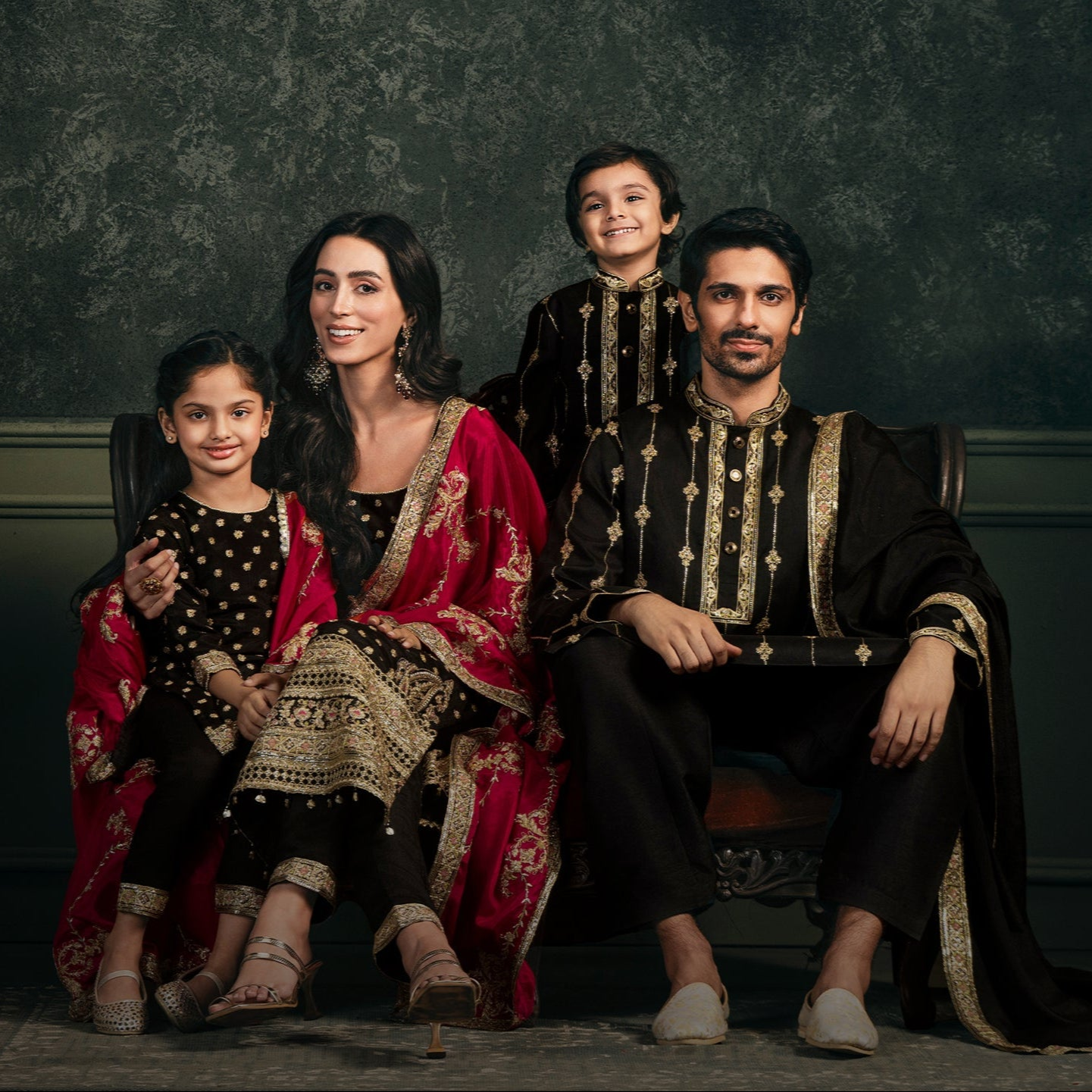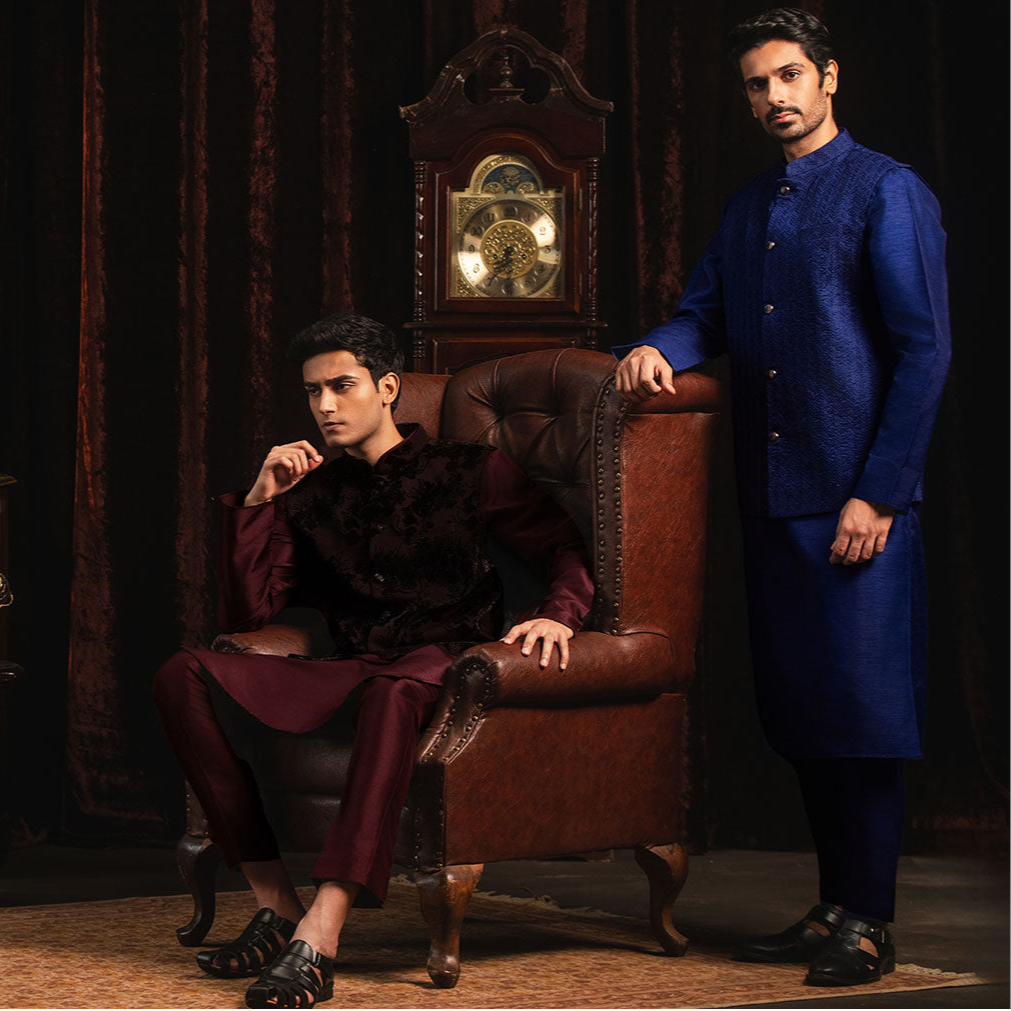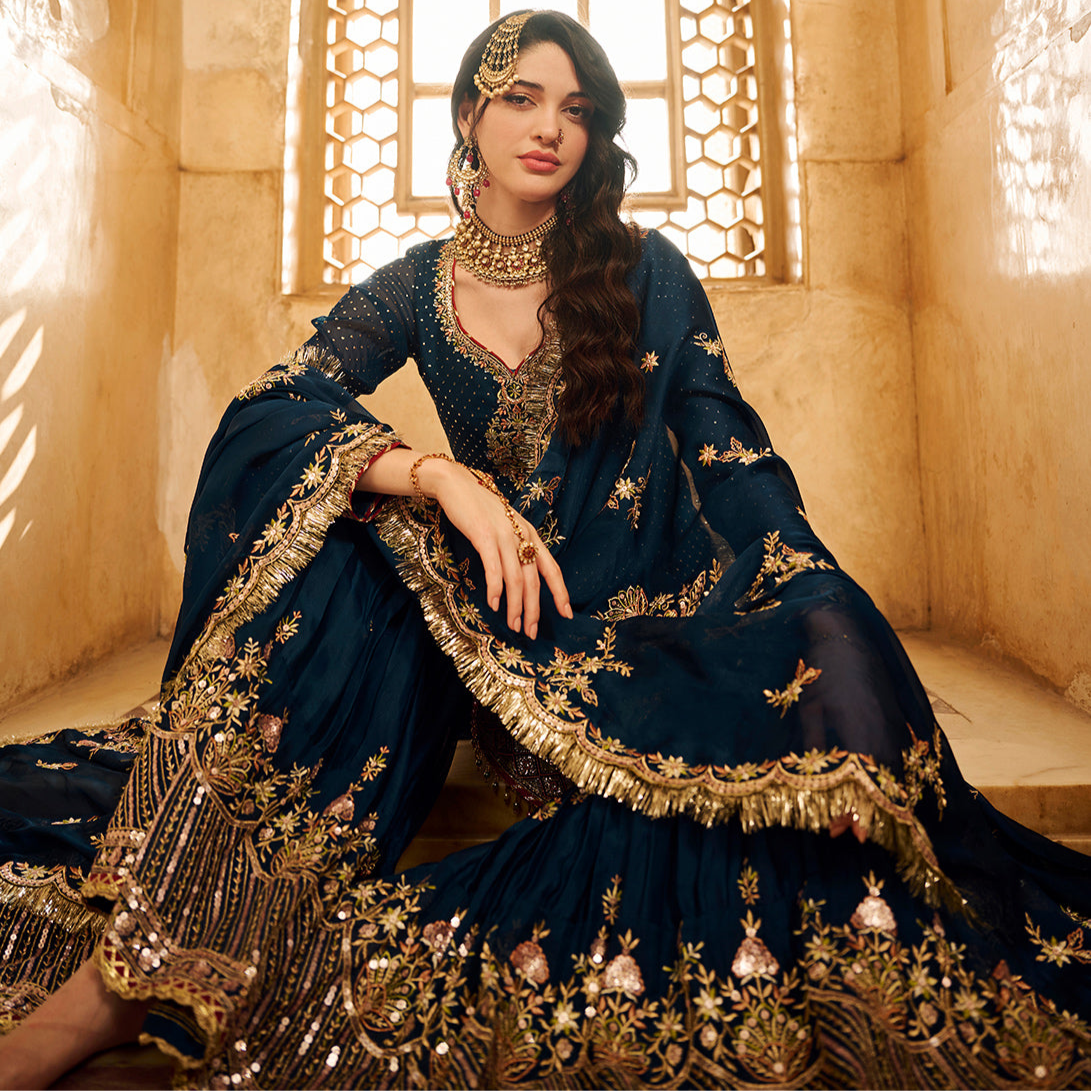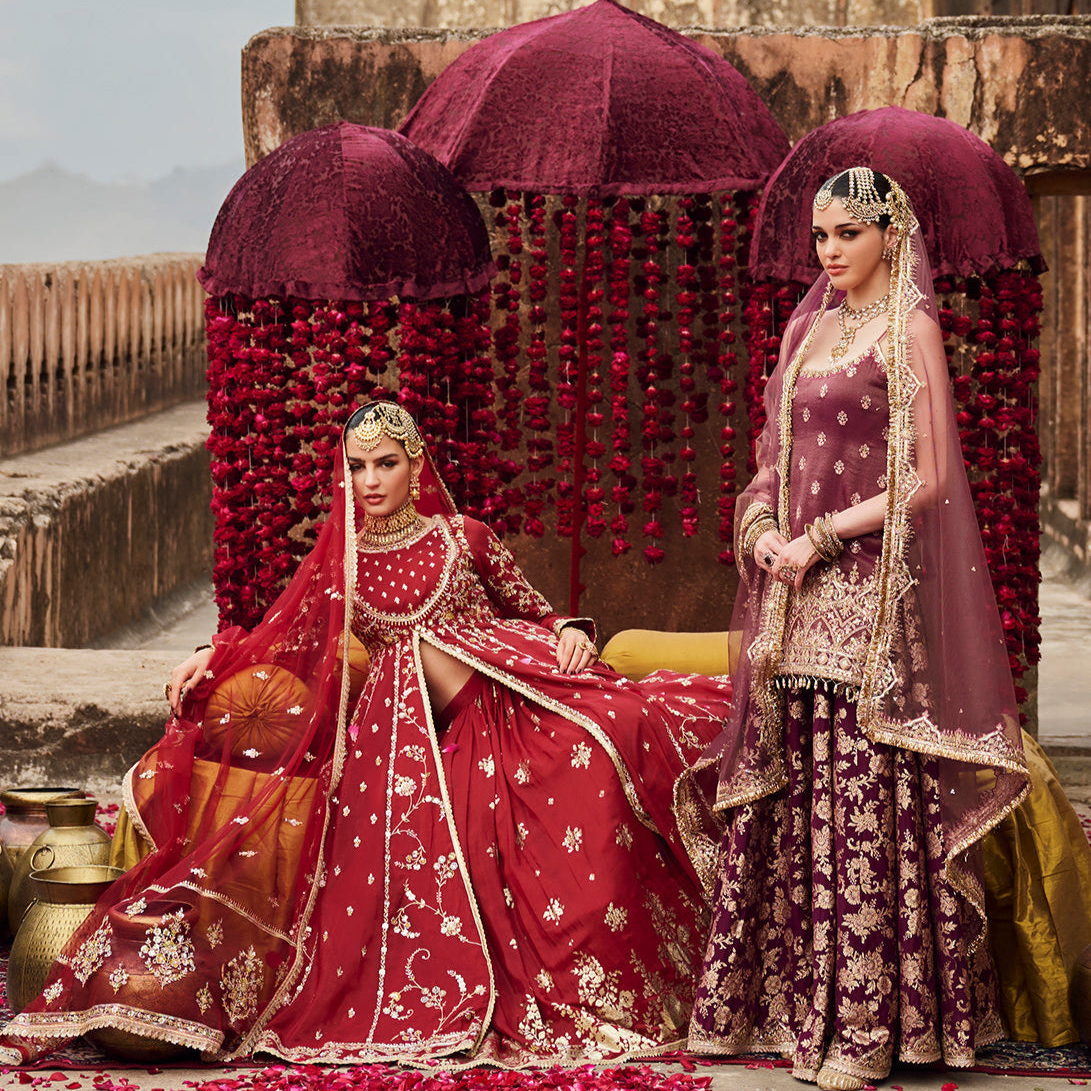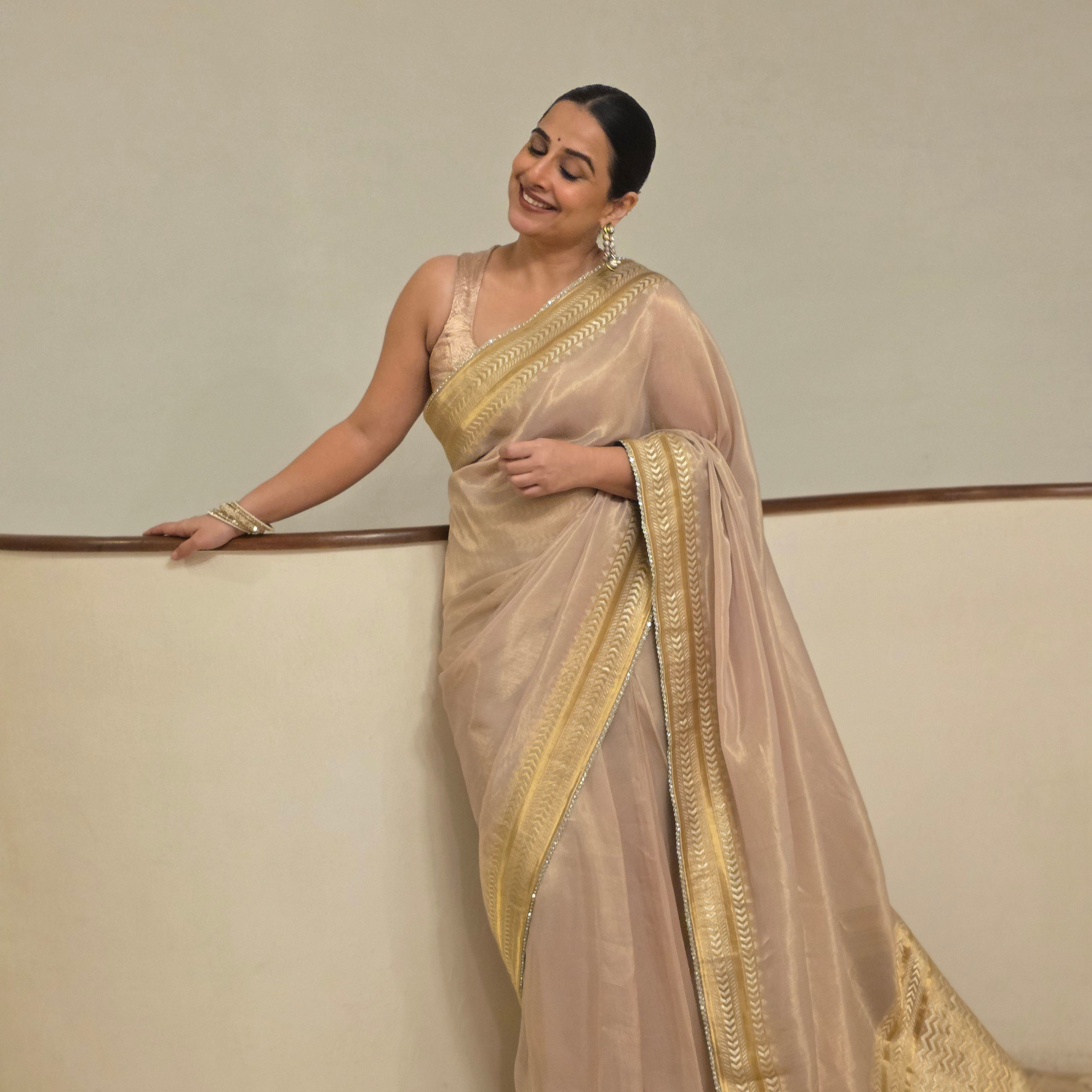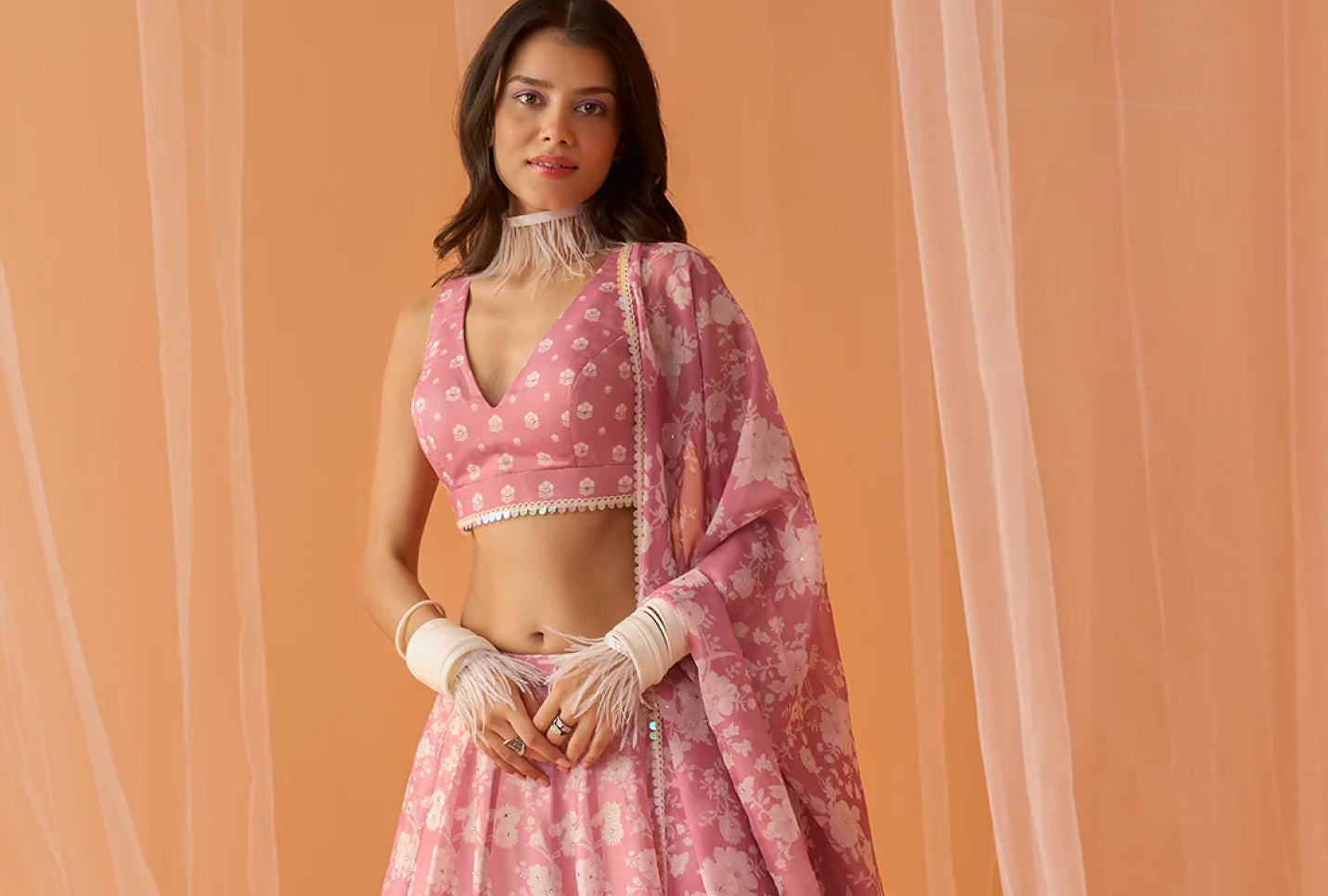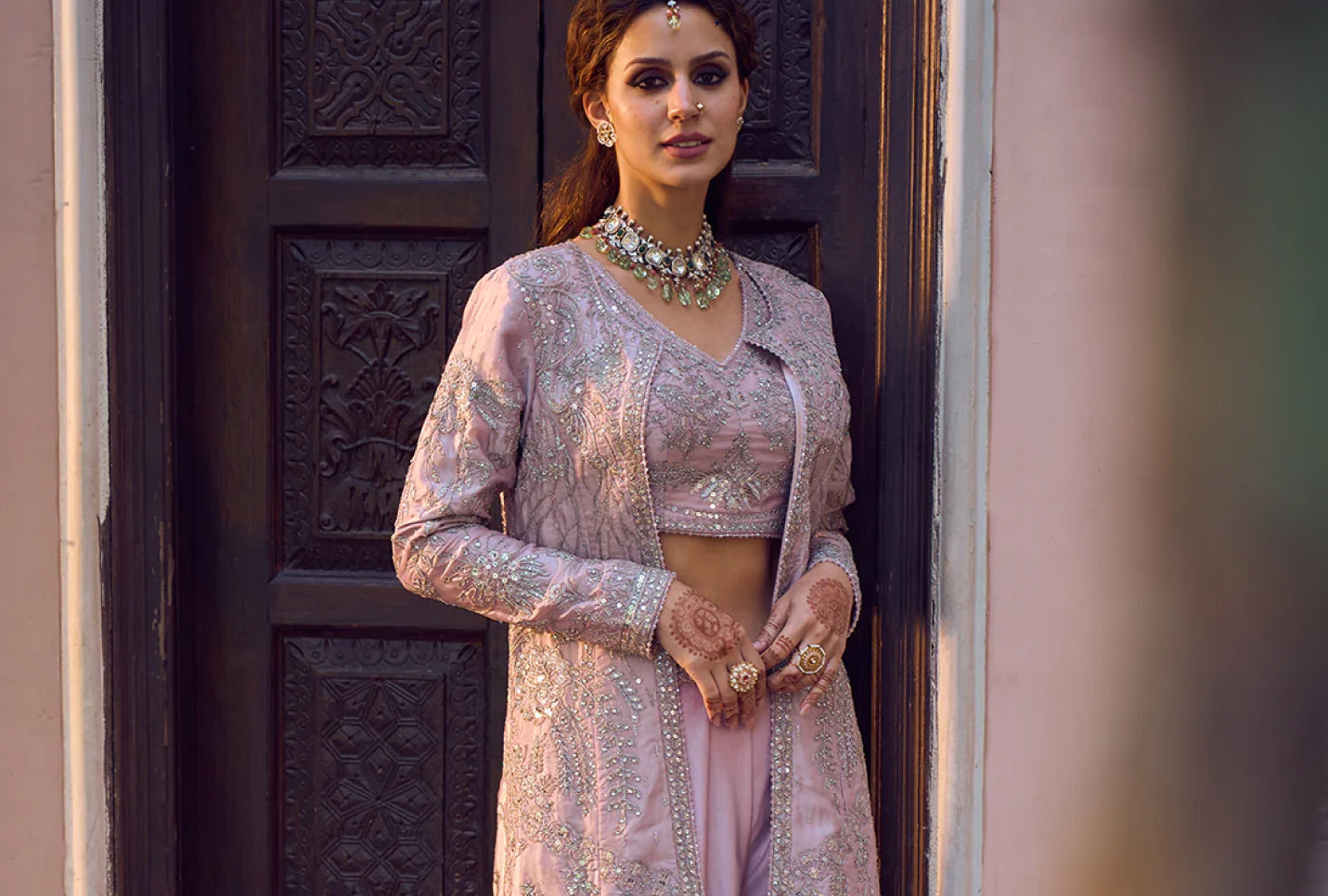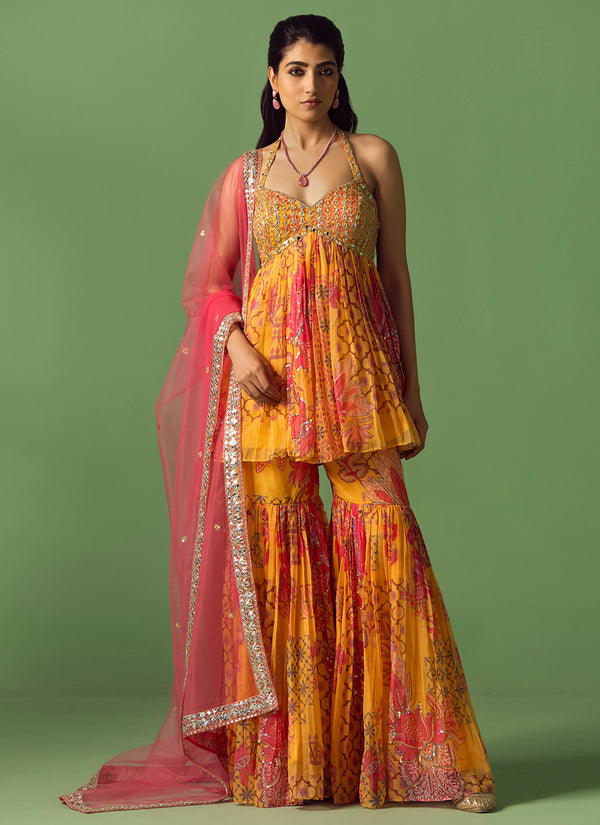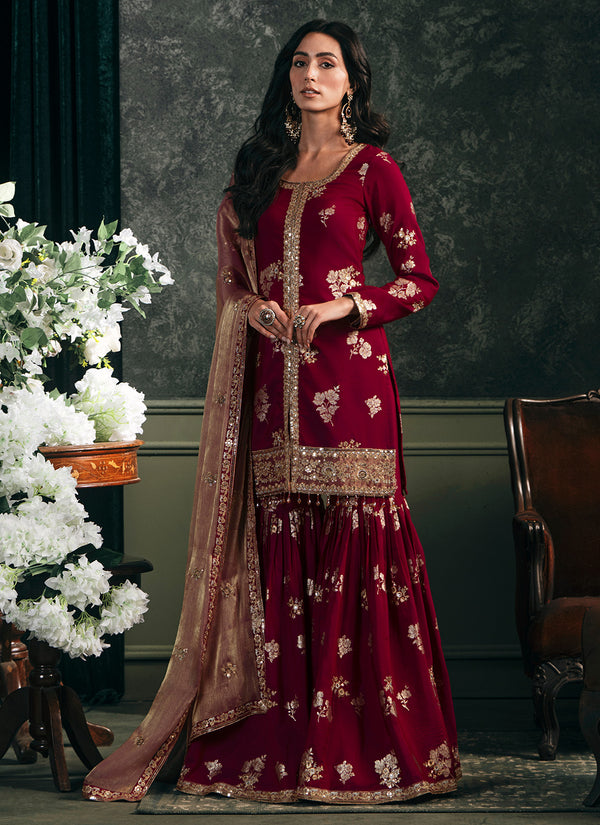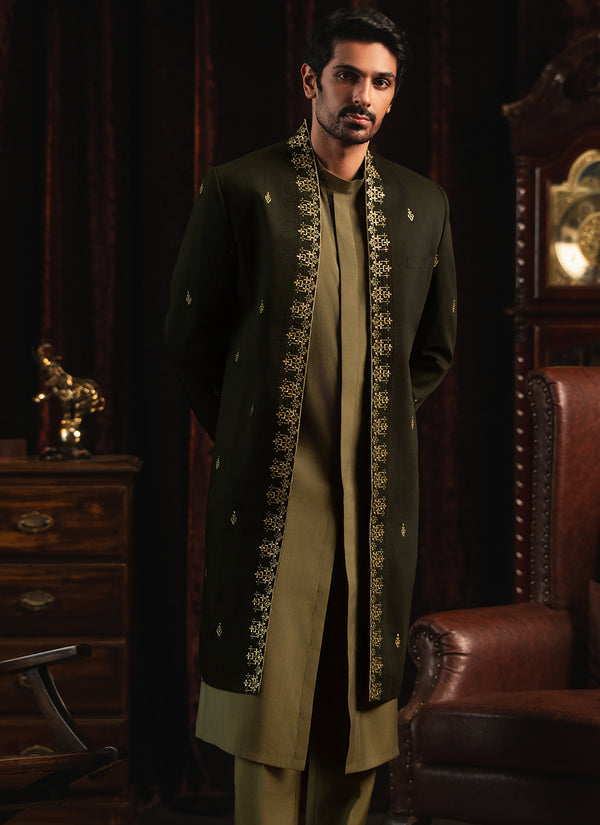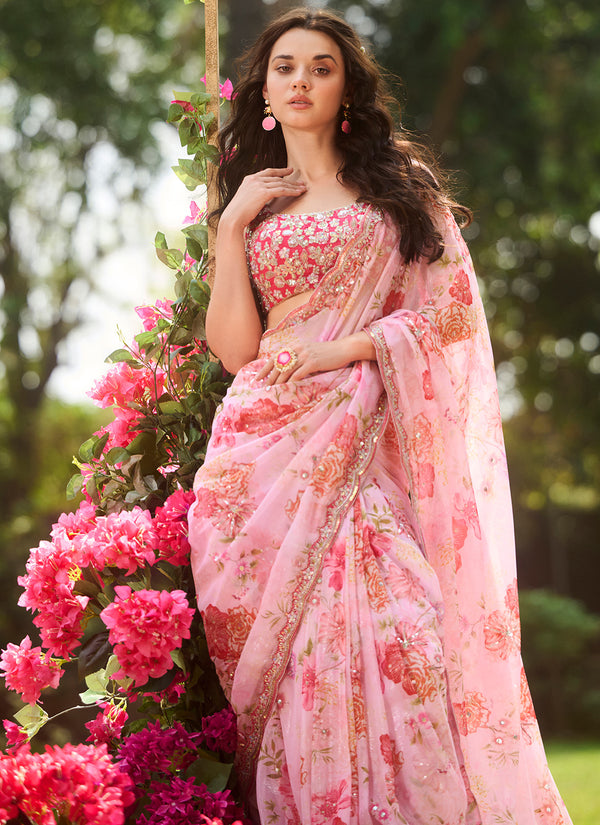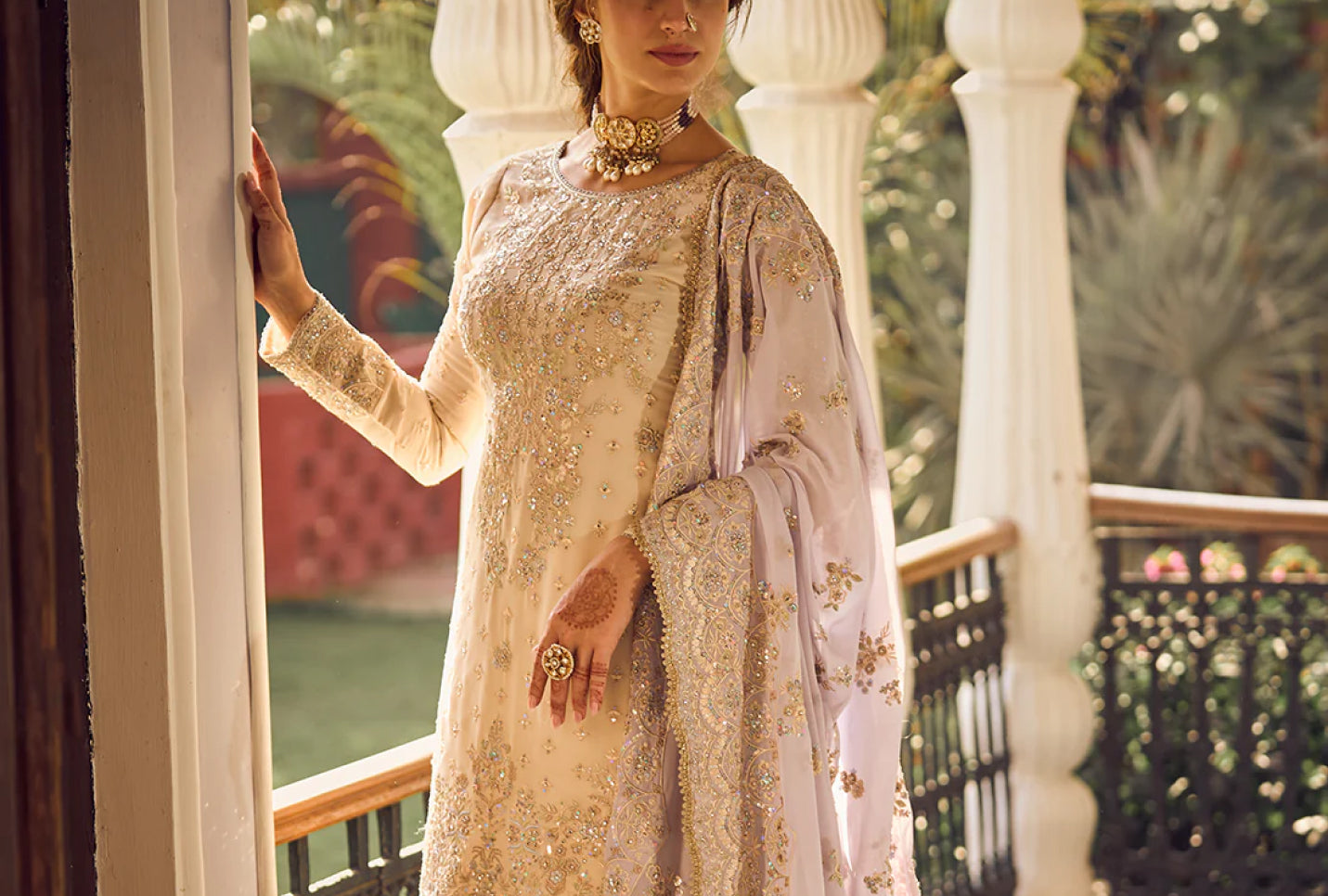
5 Must-Have Indian Outfits for Women: A Guide
When it comes to Indian fashion, the clothing options are vast and so are the festivities. There come many instances throughout the year where one would need to wear Indian outfits. From weddings of friends and family to festivals big and small like Diwali, Rakshabandhan, Holi and pujas, Indian ethnic wear is the dress code to follow. Even with no special occasion marked on our calendar, celebratory soirées and cocktail parties often demand a contemporary Indian look to follow.
Gone are the days when traditional ethnic clothing meant the conventional saree and salwar kameez style. Thanks to evolving Indian fashion trends, we now have stunning pre-draped sarees, dhoti suits with and without a stylish drape to go with it, jumpsuits, light lehengas that may pass as flowy skirts, and Anarkali styles that aren’t old-school. Bookmark these must-have Indian outfits to wear to your next Indian event.
Invest in a Stunning & Elegant Saree
The grace and elegance of a saree is truly unmatched. This timeless silhouette is a wardrobe staple for not just seasons but even generations. Sarees are often passed down to the next generation and they aren’t considered old but a classic. If you’re attending a traditional Indian event like a puja or a wedding, a traditional saree works best in this case.
Our best pick from Lashkaraa’s range of sarees is our Lavender Embroidered Saree that is a stunning ensemble for a day or night event. With its base in georgette with zari and stone hand-work, the saree complements a matching satin blouse. For a not-so-traditional style, our Mint Blue White Floral Printed Saree is a statement making casual item. The ruffles give it an easy, breezy aesthetic. A style perfect for the bridesmaids is the Lavender Floral Printed Saree that comes with a stunning blouse in a plunging neckline. Some heavily embellished styles are our Dusty Blue Heavy Embellished Net Saree and Periwinkle Embellished Net Saree.
How do you drape a saree? Play with the draping style to add a freshness to the conventional saree style. One can spread the drape over the arm for a dramatic look, keep it clean by folding the pleats over the shoulder or further experiment with a style you’re comfortable to carry.
Look Outstanding in Colorful Salwar Kameez Outfits
Salwar Kameez is one of the most comfortable and timeless ensembles in Indian fashion. Rooted in tradition, it is one of the oldest styles in India and is worn throughout the country as a common everyday outfit.
If you’re new to the Indian fashion scene, you may be wondering: what is a Salwar Kameez? Salwar Kameez is a three piece set of Indian style pants or trousers (salwar) that is paired with a long top that usually goes till the knees and below (kameez) and a dupatta (drape). Apart from its phenomenal use as daily wear by many women in India, salwar kameez comes in many variations. Styles like a Punjabi Suit with a Patiala Salwar, straight trouser like pants, churidar style, wide leg palazzos, sharara and gharara and Anarkali, are the most popular salwar kameez styles.
Each one can be worn on many different occasions by both guests and the bride herself. The heavier the work and embroidery on the garment, the more exclusive that outfit becomes. Lashkaraa’s exhaustive range of salwar kameez styles offer a wide selection to choose from.
If you want to embrace bold tones, Lashkaraa’s Pink Floral Printed Sharara Suit comes in an eye-catching hot pink shade. This one is ideal for day functions like a poolside Mehendi or Ganpati Puja. A regal looking gharara is our Cream and Lavender Embroidered Gharara Suit from the collection Suroor. Another elegant suit style from this collection is the Light Green Peplum Style Punjabi Suitthat embodies the elegance of tradition. Choose from our Salwar Kameez styles here. (insert link)
Step into Style with Fabulous Lehenga Cholis
Not just diamonds, lehengas too are forever! Whether they are casual, printed ones or heavily embellished ones, lehengas have their own charm. A wedding lehenga appropriate style is our Bottle Green Embroidered Lehenga. Its extravagant artisanal details help to revisit the grandeur of yore. For a subtle yet regal look is ourDusty Pink and Red Embroidered Lehenga.
How to wear a lehenga? Lehengas are usually worn with a choli and a dupatta. The dupatta draping varies and can be draped in many ways. If a traditional lehenga choli style is too mainstream for you, our Maroon Kurti Style Lehenga is an ethereal statement making style.
Accentuate Your Charm with an Embellished Churidar Suit
Investing in classics is the best way to go about creating a must-have Indian wardrobe. While you’re at it, take the opportunity to invest in a churidar suit. The churidar pyjama is a tightly fitted trousers, worn by both men and women in the Indian subcontinent. A churidar suit is a classic in Indian fashion. Embellished churidar styles will instantly elevate your Indian vibe. Churidar pyjamas can be paired with straight kurtas and Anarkali style too.
Make a Fashion Statement with Anarkalis
An Anarkali suit is made up of a long, frock style top and features a slim fitted bottom, like a churidar pyjama. These are definitely worthy of making a fashion statement because of their grand nature. Anarkalis are generally floor length. A fully embellished Anarkali is perfect for the festivities. Lashkaraa’s Light Green Embellished Velvet Anarkali is the ultimate head-turning outfit to add to your festive wardrobe.
To complete the Indian look, accessorize! One can choose from a variety of jewelry options – for the head, neck, ears, hands, even feet. Indian hair accessories support many hairstyles. If you want to go for a hair-bun, there are stunning hair clips and accessories available to add an edge to your hair bun. When all else fails, turn to nature. One can use real flowers to create beautiful hairdos. Don’t forget a gorgeous potli handbag and juttis or Indian style wedges and you’re good to go!
Sources:

